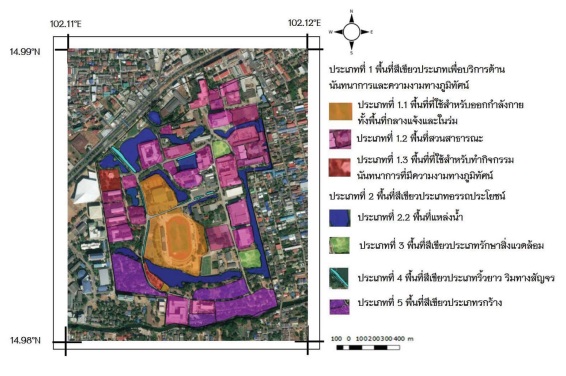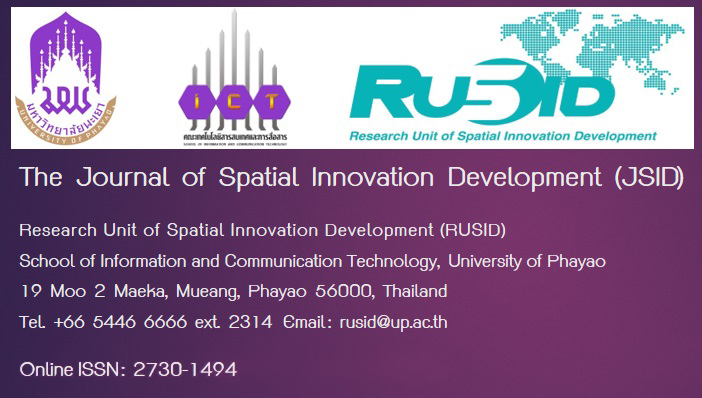Studying Green Areas based on Green Area Management in Sustainable City Case of Rajamangala University of Technology ISAN Nakhonratchasima (Center)
Keywords:
Sustainable green areas, Green University, Green CityAbstract
This article aims to study type of green areas in Rajamangala Univeristy of Technology ISAN Nakhon Ratchasima (Center) or RMUTI ISAN in accordance with green area management in sustainable city. This study included 3 steps: 1) data collection e.g. satellite imagery from Bing in QGIS 2.18.16 year 2020, 2) data analysis with visual interpretation and field checking and 3) data report.
Results are found that green areas in RMUTI ISAN Nakhon Ratchasima (Center), include 5 types such as 1) recreation and landscape outlook, 2) multiple-use, 3) environmental preservation, 4) narrow stripes along traffic ways and 5) abandon areas. These green areas are checked by ground and calculated by overall accuracy about 84.75%. For sustainable and non-sustainable green areas, there is whole green areas-based management in sustainable city composes of 215.30 rai, are divided into sustainable green areas 162.90 rai (75.66%) and non-sustainable green areas 52.40 rai (24.34%). Area of green type 1 is mostly appeared by 138.40 rai (64.28%) that separated into sustainable green areas 98.00 ไร่ (45.52%) and non-sustainable green areas 40.40 ไร่ (18.76%). While, Area of green type 4 is seen at least by 1.90 ไร่ (0.88%) with all sustainable green areas. However, RMUTI-green areas should be added as environmental preservation and narrow stripes along traffic ways 6% and 8.58% in the study area, respectively. Therefore, these two areas of the university should be used for further management and management planning.





